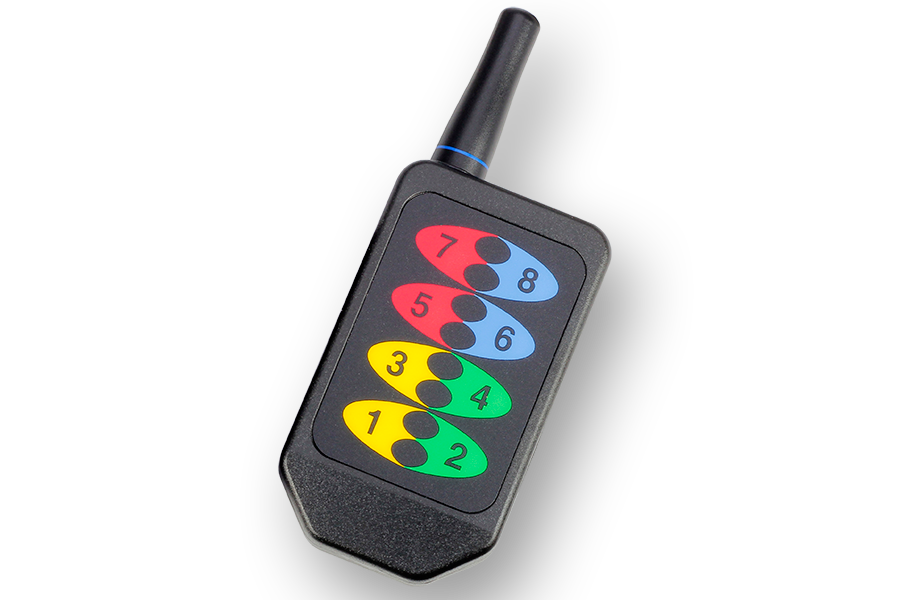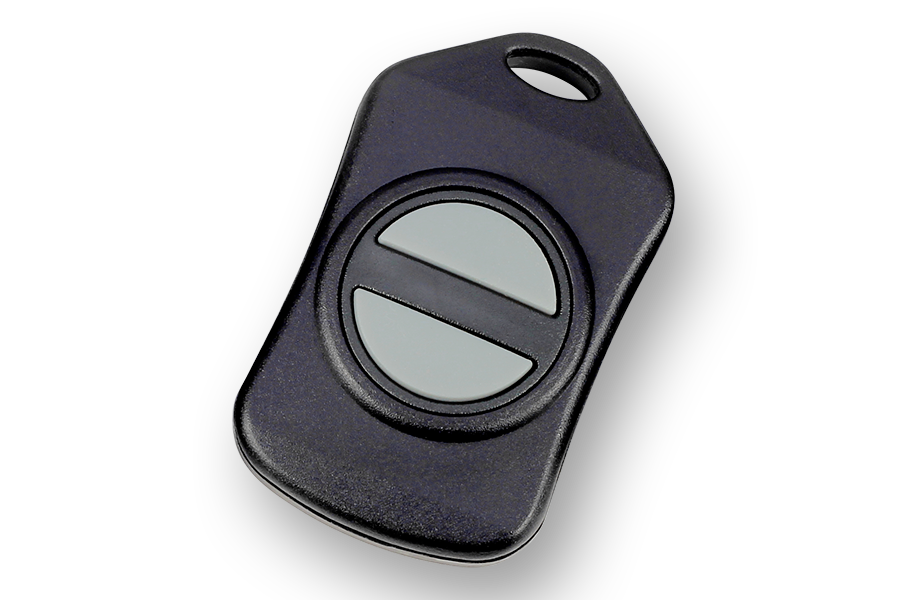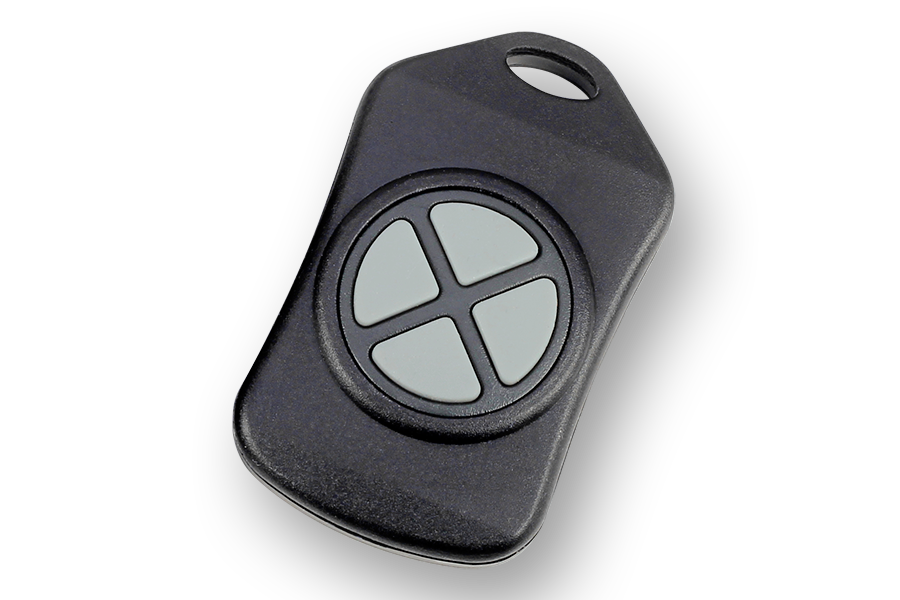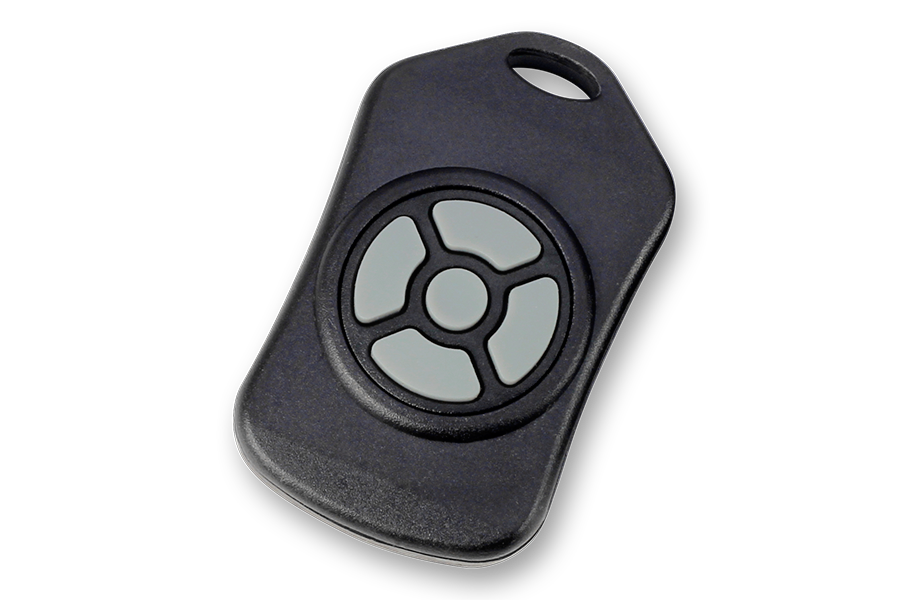Industrial Relay Controller 16-Channel SPDT + UXP Expansion Port
Highlights
- Control 16 On-Board 5 or 10-Amp SPDT Relays
- Expandable to control More Relays using the XR Expansion Port
- Modular Communications Interface Supports Many Popular Communication Modules:
- WiFi, Bluetooth, Ethernet, WebPage, Industrial Wireless, USB, RS-232 and More
- 16 Background Timers Can be Assigned to Any of the On-Board Relays
- Server Reboot, Watchdog, & Keep Alive Duration/Pulse Timing Command Set
- Control One Relay at a Time or All Relays Simultaneously
- UXP Expansion port for Adding Additional:
- Contact Closure Modules – up to 2,048 Inputs
- Digital Potentiometers – up to 48 Inputs
- Analog to Digital Conversion – up to 256 Outputs
16-Channel SPDT Relay Controller with UXP Expansion Port
This ProXR Industrial relay controller is capable of switching 16 on-board SPDT relays, each with 5 or 10 Amps of current, customized at the time of ordering. Each SPDT relay includes 3 screw terminals for normally open, common, and normally closed contact closure relay output connectivity. This controller features a modular communications interface, capable of accepting USB, RS-232, Ethernet, WiFi, Bluetooth, Industrial Wireless communication modules, and more. The on-board UXP expansion port makes it easy to add external expansion hardware to this controller. Expansion options include 12-Bit Analog to Digital Converters, Contact Closure Inputs, or Digital Potentiometer outputs. Expand ProXR controllers to switch more relays of various types using the XR Expansion Port. Simply plug in any XR Expansion Relay Controller and you are ready to switch solid state relays, DPDT signal relays, general purpose SPDT relays, and high-power relays.
ProXR Series Industrial Relay Controllers
NCD has been in business since 1995, and we created the world’s first commercially available relay controller. ProXR Industrial controllers are the best controllers on the market with over 10 years of production history and a 5-Year Repair or Replace Warranty to back it up! There are many reasons that make ProXR the leading relay control solution. Let’s take a look at why ProXR controllers are unique, and why industry has chosen NCD controllers for so many years…
ProXR Reliability
The firmware we designed for ProXR series controllers is ultra-stable. Our CPU uses hardware interrupts to manage communications while processing a wide range of background tasks, such as 16 relay timers, 16 relay flashers, data parsing, and garbage cleanup. ProXR controllers will never “drop” commands, even in the most demanding environments. We use a hardware watchdog timer, built into our CPU. The watchdog timer acts as a supervisor, capable of rebooting the CPU should anything go wrong so you never loose communications. The current CPU is more powerful, more feature packed, and more stable than any other controller on the market. ProXR controllers were designed to operate non-stop 24/7 from 0 to 85C.
ProXR Features
ProXR controllers can take control of relays in ways you may have never imagined. Of course you can turn relays on, or off, or toggle the current state of the relays. It’s also easy to read the status of individual relays, relay banks, or all relays on the controller. These are basic functions every relay controller should support. ProXR relay controllers have many features you may not expect. For instance, ProXR controllers support 16 timers that run in the background. Each timer can activate a relay for up to 255 Hours, 255 Minutes, and 255 seconds when activated. Activate 16 security lights using the timers and watch them all turn off at different times. ProXR controllers also support 16 flashers, allowing up to 16 relays to be automatically cycle on and off in the background until the flasher is canceled. Relay grouping commands allow ProXR controllers to simulate large expensive relays using low-cost relays. Grouping commands are used to activate a master relay plus a few of it’s neighbors simultaneously, allowing simulation of DPDT, 3PDT, 4PDT, 5PDT, 6PDT, 7PDT, and 8PDT relays using a low-cost 8-Channel SPDT relay controller.
Automatic and Manual Relay Refreshing
By default, ProXR controllers automatically update the status of relays every time you send a command. This feature may be enable or disabled. When disable, users have the ability to configure the relay memory without actually switching relays. Once all the memory is configured, simply send the Relay Refresh command and all relays will refresh simultaneously. This is particularly useful in applications that may require you to configure the on/off state of each relay and switch all relays at the exact same time. ProXR will remember your refresh settings every time it powers up. And while we are on the subject of power-up, ProXR relay controllers do not click when power is first applied. This alone is one of the biggest reasons industry has chosen ProXR over the competition.
XR Expansion Port
ProXR relay controllers are equipped with a XR Relay Expansion Port. The XR Port allows you to add more relays to your controller as your needs expands. Combine mechanical and solid-state relay expansion controllers in any combination to accomplish your automation requirements. We manufacture SPST, SPDT, and DPDT expansion solutions, available in 4, 8, 16, 24, and 32 channel versions. ProXR relay controllers support up to 256 relays in firmware; however, expanding over 128 relays may not be possible if the cable length is too long.

Why Industry Uses ProXR
There’s a lot of little things we did to make ProXR special. We created Base Station Software so you can learn to use ProXR controllers using a Windows 8 or 10 PC. Base Station supports all communication technologies and teaches you what bytes to send to your controller so you don’t have to hunt down the manual every time you want to use a new function. Simply copy and paste the communication bytes from the Base Station User Interface into your favorite programming language. Base Station will demonstrate the engineering behind ProXR series controllers, but if you want a preview, just take a look at the ProXR Quick Start Guide in the Resources section. On-line videos walk you through all the major features. ProXR controllers have a 5 year warranty and a operational life expectancy exceeding 10 years. We built ProXR controllers to last. We are committed to up-gradable hardware, not disposable hardware. We use the best relays, the best communication technologies, and we have the best support in the industry. We can help you with all of your relay control needs, no matter how complex!
Base Station Software
Base Station Software was designed to help you learn the ProXR command set. Explore ProXR features using our Graphical User Interface. Watch data bytes flow to and from the board, so you easily understand the command execution process. There is no faster or easier way to learn how to automate than Base Station, as it was designed to work with our complete array of communication modules, including Wireless, Ethernet, USB, RS-232, and many more. You only need a Windows 8 or 10 Computer to Run Base Station. Base Station was written in Visual Studio, and we even provide the source code to help you on your way! Learn More about Base Station Software Here.

Learn More about ProXR Series Controllers
Base Station helps you learn how to use ProXR Series relay controllers. In this video, we will cover some of the most commonly used features.
Download Base Station
Download the Latest Version of Base Station and Source Code for Visual Studio.
ProXR Quick Start Guide
Online Manual for ProXR and ProXR Lite Series Controllers
Good to Know!
NCD ProXR Series Controllers have been in production for many years and have amassed a large user base since their initial release in the early 2000s. Due to the large client base, we have no plans to discontinue this line of products. In many cases, we are upgrading these devices to make them compatible with automated assembly processes along with improved driver and power electronics capable of supporting many communication technology changes well into the future. Rest assured, ProXR will continue to be a stable part of our product line for many years to come. ProXR series controllers manufactured with a Black circuit board have been migrated to automated assembly and are considered to be the final iteration of this product. These devices can be manufactured in high volumes in a much shorter period of time.
LabVIEW Relay Control

NCD supports integration of NCD relay controllers using LabVIEW. We have included samples and drivers for basic and advanced operation which cover most functions including Relay Timers. We have posted several tutorials on this topic here.
UXP Universal Expansion Port
This controller is equipped with a on-board UXP Universal Expansion port. The UXP port allows users to connect expansion controllers to this device, greatly enhancing the hardware features of this controller. There are essentially 3 types of expansions that may be connected to ProXR UXP series controllers. While it is not possible to mix expansion modules, multiple expansions of the same type are supported by UXP series controllers.
Contact Closure Input UXP Expansions
Connect buttons, switches, magnetic door sensors, pressure switches, current detection switches and much more to the contact closure input UXP expansion. Expansion boards are available in 16, 32, and 48-Channel versions. Mix and match any version up to a total of 2,048 contact closure inputs to your UXP series series relay controller. Contact Closure inputs are queried in your software, simply ask the controller for on/off status of any input bank (a bank represents 8 contact closure inputs), and the controller returns a byte, indicating the on/off status of 8 inputs at a time. Click on the photos below to learn more about each of the Contact Closure Expansions (links open in a new window).
16-Channel Potentiometer Output UXP Expansion
Connect this 16-Channel potentiometer output expansion to your UXP ProXR controller and take control of 16 digital potentiometers at 8-bit resolution per channel. Choose between 10K, 50K, or 100K potentiometers. Mix and match potentiometer expansions up to a total of 256 potentiometer outputs. Digital potentiometers are capable providing a resistance output for each channel within the 0-5VDC voltage range. Potentiometer outputs are capable of safely handling up to 1ma of current per channel.
16-Channel 12-Bit Analog to Digital UXP Expansion
The 16-Channel 12-Bit ADC expansion module allows users to connect 16 analog sensors from 0 to 5VDC to the UXP expansion port for accurate measurement. With 12-Bit resolution, analog voltages are converted into integer values from 0 to 4095. Up to 3 of these expansions may be connected to a single UXP Expansion port, allowing up to 48 Channels of analog sensors to connect to your ProXR relay controller.
ProXR Communication Options
We take communications seriously, as we believe in a modular communications and firmware that properly supports scalability into future interface technologies. ProXR controllers support API communications, which effectively wrap every command with a header, payload, and checksum to ensure reliability. NCD API commands increase processing speed because no serial timeout is required prior to command processing. NCD API commands increase reliability, as only a proper checksum will authenticate a command and allow it to process. When we first implemented API, internet communications via a TCP/IP socket could be realized because the timing problems of internet communications were eliminated. While API is optional, it is strongly advised. Our Base Station software uses API communications, so it’s possible to control a ProXR controller over the internet after configuring port forwarding on your router.
ProXR series controllers are the world’s most adaptable controllers, capable of communicating with a wide variety of communication options. Pick any of your favorite communication technologies: Bluetooth, USB, WiFi, Ethernet, Key Fob, RS-485 or RS-232. ProXR easily adapts to the communication technologies you need most. We are committed to modular communications, so your ProXR series controllers can easily be retrofitted for other applications as your needs change. ProXR controllers are never obsolete, as we are actively releasing new communication technologies that greatly enhance the connectivity of our ProXR series controllers.
Communication Module Options

RS-232 Serial Communications Module
NCD RS-232 Serial Communication modules make it easy to integrate the worlds most prolific communication standard. Easily interface to desktop PCs and laptops for easy control via standard serial commands. Most NCD devices typically default to 115.2K Baud; however, older low-cost devices implement 9600 baud data rate as the predominate standard. Learn more about our RS-232 communications module here.
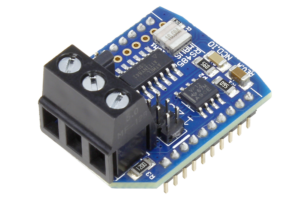
RS-485 Serial Communications Module
Our RS-485 Serial Communications Module makes it easy to network up to 256 NCD devices together at distances up to 4,000 feet. Each RS-485 node includes 3 screw-terminals for a 3-wire connection to the RS-485 master. Learn More about our RS-485 Communications module here.
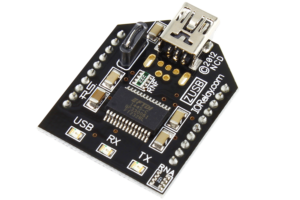
USB Communications Module
Our USB interface module makes it easy to control our devices using the USB port. Simply plug into any available USB port and start controlling our devices using standard serial commands. NCD USB Interface modules feature genuine FTDI USB to Serial Converter Chips, the very best in the industry. Learn more about our USB Communications module here.
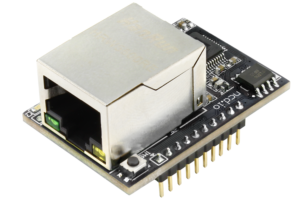
Ethernet TCP/IP Communications Module
Control NCD devices using standard Ethernet TCP/IP communications. Simply open a socket and send and receive TCP/IP data to control our devices. Our Ethernet TCP/IP Communication modules feature our 3rd Generation Ethernet to Serial communications module. Use the integrated web page to configure settings. Upload your own customized web page to add special features to this device. We have included a few sample HTML files to help you get started. Learn more about the NCD5500 Ethernet communications module here.
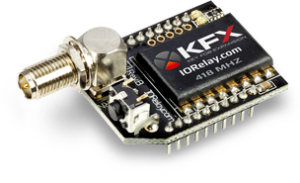
Key Fob KFX Remote Control Module
Our KFX Key Fob Remote control Module generates serial data when a remote control button is pressed or released. Remote control buttons can be used to send relay activation and deactivation commands when paired with a ProXR compliant relay controller. The KFX module may also be used to send serial commands to just about any NCD device with a compatible interface module connector. A USB Configuration adapter is required to configure serial communications. Learn more about the KFX Module here.
Large Key Fob Remotes Provide Remote Operation up to 700 feet away Line of Sight. Small Key Fobs are available that offer 1 to 5 Buttons with up to 200 Foot Range Line of Sight. Up to 40 Key Fobs may be securely paired to a single KFX Module with each remote triggering identical functions. Click on the Key Fobs to learn more about each remote or click here to see all KFX Related Accessories.
All links will open in a new window.
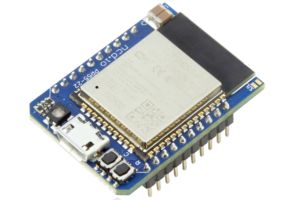
WiFi Bluetooth USB 3 in 1 Module with MQTT Support
Control NCD devices using standard WiFi TCP/IP communications or use the integrated Bluetooth for simple wireless computer to device interface using a wireless virtual COM port. Use the USB port for control over a virtual COM port for easy connectivity. This is a low-cost solution that lets you try different solutions with easy setup using a integrated Web Page User Interface for all Configuration settings. Connect to a MQTT Server over WiFi for remote operation over the internet. Learn More about our WiFi TCP/IP Communications module here.
Bluetooth
Using the Bluetooth SPP Profile, this device will connect to your PC using Bluetooth, Appearing as a Virtual COM Port. Communicate with this Device up to 200 Feet away!
WiFi
Use the Integrated Web Page to Configure Vital Settings and Use TCP Communications to Communicate to the Device using Simple Byte Packets. A integrated Relay Control Web Page is Available for Select NCD Relay Controllers.
USB
Using the USB interface, this Device will Plug into your PC, MAC, or Linux system and install a Virtual COM Port Driver
MQTT and Amazon AWS Connectivity
Connect Directly to MQTT Servers including Amazon AWS and communicate with this device from anywhere in the world. Subscribe to a Topic that contains control bytes to control the connected device. Response bytes from the connected device will be Published to the Cloud.
TCP Communications and UDP
This Communications Module sends UDP Broadcasts to help locate the IP address of the WiFi module on your Network. Once discovered, simply open port 2101 and send and receive bytes of data to control the connected device and read responses over a WiFi network.
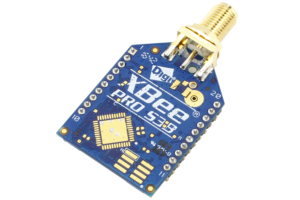
Long Range Wireless Industrial Mesh
Long-Range Wireless Mesh networking is our favorite of all wireless communication technologies. This is the ONLY communications technology NCD recommends on the factory floor, operating at a safe 900MHz. Mesh technology will hop data from one location to another to reach its intended destination, users do not need to do anything other than make sure wireless modules stay within hopping range of each other. We use the Digi 900HP-S3B module in many of our products, as this is the best industry has to offer. With a 2 mile range between modules and up to 8 hops, it is possible to cover 16 miles of wireless territory using this technology. Using high-gain antennas, this module is capable of communicating to a remote module up to 28 miles away. Please note that data hopping only works between live devices. Data will not hop between sleeping sensors. Data will hop from sensors to gateways and modems. Data will also hop between gateways and modems. Learn more about our long range wireless module here.
Associated Part Numbers
This product may have been previously manufactured using a part number shown below:
Relay Options
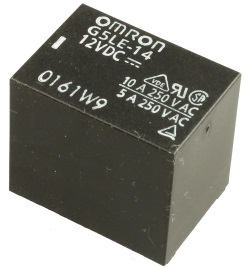
10-Amp SPDT Signal Relay Option
This controller is available with a 10-Amp relay option, allowing control of higher-power loads up to an absolute maximum of 240VAC at 10 Amps. Ideal for general purpose switching applications, this relays is focused on power-switching, and should never be used for low-power signals due to a higher On resistance of up to 150 Ohms when relay contacts are new (contact resistance drops to less than 1 Ohm after break-in period). The 10-Amp relay is of the SPDT variety, which provides Common (C), Normally Open (NO), and Normally Closed (NC) connections. Common is connected to NC when the relay is off. Common disconnects from NC and connects to NO when the relay is activated. All connections are made via screw terminals, capable of accepting up to 12 AWG wire. Review Datasheet
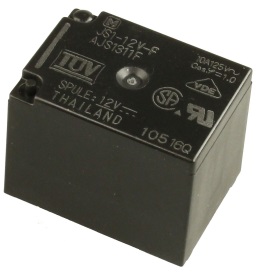
5-Amp SPDT Signal Relay Option
This controller is available with a 5-Amp relay option, allowing control of higher-power loads up to an absolute maximum of 240VAC at 5 Amps. Ideal for general purpose switching applications, this relays is focused on power-switching, and should never be used for low-power signals due to a higher On resistance of up to 150 Ohms when relay contacts are new (contact resistance drops to less than 1 Ohm after break-in period). The 5-Amp relay is of the SPDT variety, which provides Common (C), Normally Open (NO), and Normally Closed (NC) connections. Common is connected to NC when the relay is off. Common disconnects from NC and connects to NO when the relay is activated. All connections are made via screw terminals, capable of accepting up to 12 AWG wire. Review Datasheet
Mechanical Drawing
Wiring Diagrams
Essential
- ProXR Quick Start Guide
- Mechanical Relay Types
- API Codec Quick Start Guide
- Base Station Quick Start Guide
Documentation
- NCD Component Library Quick Start Guide
- Scratchpad Memory Quick Start Guide
- EEPROM Memory Map Quick Start Guide
Communications
- NCD Gen3 Ethernet Module User Guide
- NexGen WiFi Module User Guide
- RS-485 to Wireless Converter Modem Guide
- RS-485 Network Quick Start Guide
- KFX Key Fob Communications Module Quick Start Guide
- (Deprecated Technology) WiNet Gateway Quick Start Guide
- Digi 802.15.4 Quick Start Guide
- (Deprecated Technology) Web-I WebRelay Communications Module Quick Start Guide
- (Deprecated Technology) Lantronix XPort Communications Module Quick Start Guide
- (Deprecated – Legacy Hardware) WiFi Communications Module Quick Start Guide
- ZRS RS-232 Communications Module Quick Start Guide
- ZUSB USB Communications Module Quick Start Guide
Tutorials
- Using Comm Operator to Control Ethernet Relays
- Linux Relay Controller using Netcat for Ethernet and WiFi
- Using Comm Operator to Control USB Relays
- Choosing the Right USB Relay Controller
- Controlling Inductive Devices: Managing Induction & Electromagnetic Interference
- Introduction to Computer Controlled Relays and Switching
- Relay Logic
LabView Tutorials
- Installing LabVIEW USB RS232 RS485 Relay Controller Instrument Driver
- Labview Relay switching and Status acquisition 1
- LabVIEW Relay Controller Advanced Configuration
- LabVIEW Relay controller Basic Configuration
- LabVIEW Relay switching and Status acquisition 2
- LabVIEW Relay Timer Operation
Download NCD Base Station
Official Repository
WiFi Module Setup
The Wi-Fi Communications Module must be configured in order to connect to your network using the Wi-Fi Configuration Kit. The Wi-Fi Configuration Kit consists of a small black board with 3 LEDs. The Configuration Board will be labeled ZIGMO. The module may have to be removed from the board and plugged into the ZIGMO as shown. The ZIGMO will plug into the USB port of your computer for configuration and some USB drivers may need to be installed on your computer. Base Station software is required to configure the Wi-Fi communications module and is available as a free download. This software identifies compatible Wi-Fi routers in your area and assigns the router you have chosen to the Wi-Fi communications module. Network security options may be configured using this software including passwords. You can find the NCD Base Station Software at ncd.io/start.
Introduction to Ethernet Relay Control
This video will introduce you to Controlling Relays over your Local Area Network (LAN) using Ethernet Relay Controllers from store.ncd.io. Ethernet can be one of the more complicated communication interfaces due to the network protocol stack. We break it down for you to show you the most important parts for Relay Control. You can find NCD Base Station at ncd.io/start.
USB Intro
We explain the advantages and disadvantages to USB communications and how it effects our Relay Controllers and your application. Some of the information is outdated as we’ve moved away from controlanything.com. Most modern operating systems come with the FTDI driver installed so you should just need Base Station
Relay Control Commands (ProXR Part 1)
Controlling Relays from a Computer using Windows 10 and a USB Relay Board. Turn Relays On and Off and read the status of relays. This video gives you a quick introduction to how Relay Control Commands work using Base Station as a reference. You can download Base Station at ncd.io/start.
Base Station Overview ProXR Series Relay Controllers
This video is a quick introduction to Base Station, available for FREE download at ncd.io/start. Base Station is a Free software download that can control any of our Industrial Series boards and give you a quick command reference. You can find the complete Base Station Quick Start Guide here: https://ncd.io/base-station-quick-start-guide/.
Relay Power-up Status Map (ProXR Part 3)
This video demonstrates how to read the status of relays as well as setting the power-up default status of relays using ProXR relay controllers. This video uses a 16-Channel USB relay board. Relay Power-up Status Mapping allows you to account for power loss to a Relay Controller.
Controlling Individual Relays (ProXR Part 4)
This video demonstrates controlling individual relays on a 16-Channel USB Relay Board. Controlling relay individually is the easiest way to control relays on your Relay Controller. It is ideal for applications with a single endpoint/pc controlling it and doesn’t need to control multiple relays with one command.
Relay Refreshing Automatic and Manual Modes (ProXR Part 2)
Automatic and Manual Relay Refreshing Modes Explained for users of ProXR Industrial Relay Controllers. This video shows a 16-Channel USB Relay board. Manual Relay Refreshing is useful if you need to only update Relay Status (On/Off) on interval. You can send relay control commands to the board and the changes won’t become live until the manual refresh command is sent.
USB FTDI Communication Module Compatible with the Digi XBee ® Controlling Relay
FT232RL USB Interface Adapter Similar to the Digi XBee ® footprint shown controlling a 16-Channel Relay Controller Board Available from https://store.ncd.io/product/usb-communications-module-ft232rl-zusb/ Drivers Available from FTDI: http://www.ftdichip.com/FTDrivers.htm Base Station Software: ncd.io/start Digi.com offers a wide variety of XBee Interface modules for industrial wireless applications. Digi XBee® devices are compatible with NCD products.
Relay Grouping Demonstrated with a 16-Channel USB Relay Controller (ProXR Part 6)
This video demonstrates ProXR relay grouping commands using a 16-channel USB Relay Controller. Grouping commands are useful full to simulate DPDT Relays and for applications that require multiple relays to be triggered any time one relay is triggered.
Relay Flashers Demonstrated with a 16-Channel USB Relay Board (ProXR Part 7)
This video demonstrates ProXR relay flashing commands using a 16-channel USB Relay Board. Relay flashing is ideal for signal operation, warning buzzers, and any other application that needs relays to be activated at regular intervals.
Relay Timers Demonstrated with a 16-Channel USB Relay Module (ProXR Part 5)
This video demonstrates ProXR relay timer commands using a 16-channel USB Relay Module. Relay Timers are a powerful tool in the ProXR command set. Turn a relay on or off for a pre-selected amount of time using a single command after the relay has been set up. This makes for a useful tool for pulsing relays, rebooting servers/computers, and many more application where a Relay only needs to be activated for a specific amount of time.
USB Setup
Learn how to set up you own ZUSB Module to work with your NCD Relay Controller. For complete instructions and details on how to use an NCD ZUSB Module see our article at https://ncd.io/zusb-usb-communications-module-quick-start-guide/ Portions of this video may be outdated as we have moved from controlanything.com since this video was created.
802154 RANGE
A simple demonstration of the Wireless Range of 802.15.4 in the 300′ and 1 Mile Range with and without obstacles.
Wireless Range Testing Setup
This video tells you the set up that we used to get real world ranges on our wireless communication modules.
WiFi Introduction
Introduction to our WiFi Module and technologies. Learn the advantages, disadvantages as well as tips and tricks for using WiFi Relay Controllers available from store.ncd.io. You can find more in depth information on how to use and configure your WiFi Relay Controller at https://ncd.io/wifi-module-quick-start-guide/.
Ethernet over Virtual Serial Setup
Learn how to communicate to your Ethernet Module using a Virtual COM Port. Virtual COM Port communications are ideal for existing applications that make use of our wired and wireless relay control already and want to quickly add support for Ethernet Relay Controllers. Virtual COM Port communication allow you to send commands to an Ethernet Relay Board as if it were directly connected to the controlling PC.
Web-i FTP Instructions
Learn how to FTP and customize your Web-i Interface. If you want to make some changes to your Web-i interface and how it works you can follow the instructions on this video and be up and developing in minutes.
Web-i Configuration
Learn how to properly configure your Web-i. Learn how to alter the configuration of your Web-i to better suit your needs. Whether customizing macros, changing the UDP broadcast, or setting a static IP address or password this video will get you up and running.
Getting Started with Web-i
This video will show you the basics on how to get started familiarizing yourself and using the Web-i Interface. This software used to find your Web-i Controller has changed. You can now use NCD Base Station to find your Web-i Device. You can download Base Station at ncd.io/start.
Web-i Introduction
Get the rundown of the benefits and capabilities of using a Web-i in your next project. From relay control to sensor monitoring Web-i gives you an easy to use interface for your web controlled relays.
XR and UXP Expansion Ports
Get a basic introduction to both our XR Relay Expansion and UXP IO Expansion Boards. XR Expansion Boards provide additional Relays to your ProXR controller while UXP Expansion Boards provide additional functionality like ADCs and Digital IOs.
Finding the Com Port
Learn how to find the COM Port on your windows based computer. You can also use Base Station to find the COM Port of your Relay Controller. Base Station can be downloaded at ncd.io/start.
Wired Communications
Get the rundown on the pros and cons of all the Wired Communication Interfaces we offer. If you want to know which wired technology will best suit your needs this video will get you the information you need in just a few minutes. Whether you need the power of ethernet or the simplicity of RS-232 we have something to fit your application.
Introduction to Relay Control
This video will guide you in determining which relay controller you need for your application as well as a general overview of the differences between Relay Options. If you’re new to our products or just need a refresher for a new application this is a great place to start.
Induction Suppression
Learn about Induction and how it comes into play with Relay Controllers. Induction suppression can make your Relay Control applications intermittent and unreliable. This video will show you what causes it, how to avoid it, and how to account for it in your application.
SPDT Relay Controller Specifications
This table covers all NCD SPDT Relay Controllers. All ratings assume 12VDC operation at 70°F (21°C). Please note that most ratings are estimated and may be subject to periodic revision. Some ratings represent stock controller settings without performance enhancement optimizations. The estimated processing time can be impacted by background services and choice of commands. Standby power consumption assume no communications module is installed and no relays are active on the controller. Please add the power consumption of the activated relays and communications module to obtain a better estimation of power consumption.| Specifications of NCD SPDT Relay Controllers | Minimum | Nominal | Maximum | Notes |
|---|---|---|---|---|
| Operational Voltages | 10VDC | 12VDC | 15VDC | |
| Standby Power Consumption | 35mA | 100mA | 200mA | No Active Relays, No Com Module |
| Relay Power Consumption | 28mA | 35mA | 60mA | Consumption of Each Activated Relay |
| Operational Temperature Range | -40°F (-40°C) | 70°F (21°C) | 185°F (85°C) | Theoretical Component Limits Shown |
| Storage Temperature Range | -67°F (-55°C) | 70°F (21°C) | 185°F (85°C) | Theoretical Component Limits Shown |
| Operational Ambient Air Humidity | 0% | 50% | 70% | Non-Condensing Humidity Values Shown |
| Relay Activation Time | 4ms | 5ms | 10ms | Needs Further Validation |
| Relay Deactivation Time | 5mS | 10mS | 15mS | Needs Further Validation |
Communication Module Specifications
This table covers all NCD Communication Modules. While NCD communication modules operate at 3.3VDC, the ratings below highlight the effect they will have on the master controller operating at 12VDC at 70°F (21°C). Maximum ratings should be used for power budget planning purposes and may reflect short term absolute maximum peak current consumption. Some ratings are estimated and subject to periodic revision.| Specifications of NCD Communication Modules | Minimum | Nominal | Maximum | Notes |
|---|---|---|---|---|
| Operational Temperature Range | -40°F (-40°C) | 70°F (21°C) | 185°F (85°C) | Theoretical Component Limits Shown |
| Storage Temperature Range | -67°F (-55°C) | 70°F (21°C) | 185°F (85°C) | Theoretical Component Limits Shown |
| Operational Ambient Air Humidity | 0% | 50% | 70% | Non-Condensing Humidity Values Shown |
| USB Communications Module Power Consumption | NA | NA | NA | USB Modules are Powered by the USB Port Do Not Consume Device Current |
| RS-232 Communications Module Power Consumption | 10mA | 20mA | ||
| RS-485 Communications Module Power Consumption | 20mA | 35mA | ||
| Ethernet Communications Module Power Consumption | 58mA | 82mA | 100mA | |
| WiFi Bluetooth USB Communications Module Power Consumption | 37mA | 50mA | 100mA | Up to 300 Foot Indoor Wireless Range, Unobstructed. Up to 50 Foot Range Through Walls. |
| 900MHz Wireless Communications Module Power Consumption | 13mA | 30mA | 50mA | Up to 1,000 Foot Indoor Wireless Range, up to 2 Mile Outdoor Wireless Range using Included Antennas. Up to 28 Miles Outdoor Wireless Range using High-Gain Antennas. |
| 868MHz Wireless Communications Module Power Consumption | 17mA | 30mA | 50mA | |
| 2.4GHz Wireless Communications Module Power Consumption | 8mA | 20mA | 30mA | |
| KFX Wireless Key Fob Communications Module Power Consumption | 11mA | 15mA | 25mA | Up to 200 Feet Outdoor Wireless Range using 1, 2, 3, 4, or 5 Button Key Fobs. Up to 700 Feet Outdoor Wireless Range using 8-Button Remotes. |
900HP-S3B Wireless Compatibility Notes
Notice: Compatibility Notes Does NOT Apply to the Following Products:
- NCD Enterprise Solutions
- NCD Wireless Sensors
- NCD Enterprise Modems and Gateways
Notice: Compatibility Notes Applies to NCD Industrial Products, Including Fusion, ProXR, ProXR Lite, Taralist, and Reactor Series Products.
Compatibility Notes
When using an 900HP-S3B communication module, it is essential that you use the ZIGMO_PCB to configure the module settings. Long-Range wireless sensors may be programmed over the air without removing the communications module.
A 900HP-S3B Modem or a gateway of some kind that support the 900HP-S3B communications module will also be required.
Ethernet TCP/IP Compatibility Notes
This device periodically sends UDP Packets on port 13,000, which help identify the IP address of this device on your network.
RS-232 Serial Compatibility Notes
The NCD RS-232 Serial communications module is compatible with standard RS-232 signals (+/-10VDC), which are not directly compatible with UART signals from a microprocessor. If you are working with Arduino, Microchip PIC, or other common microcontroller, a communications module is not required. Microcontrollers will directly talk to the on-board processor of all NCD controllers.
RS-485 Serial Compatibility Notes
The NCD RS-485 Serial communications module is compatible with NCD ProXR, ProXR Lite, Fusion, and Taralist series controllers. This module was designed to work with NCD devices, but may be used with devices outside the NCD family. This device acts as a transparent RS-485 to USART serial converter. Non-NCD products will require a software networking protocol to support multiple devices.










